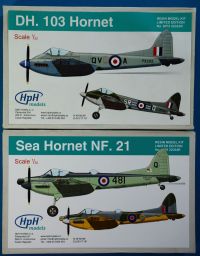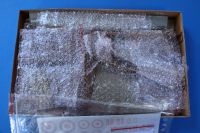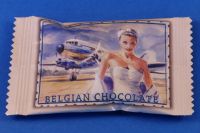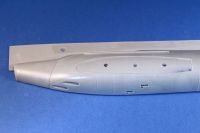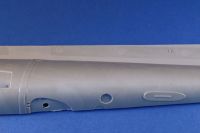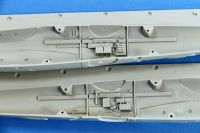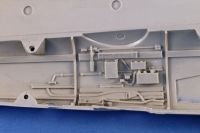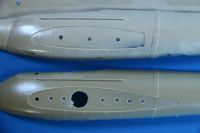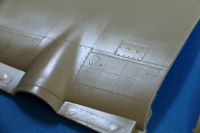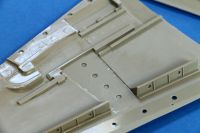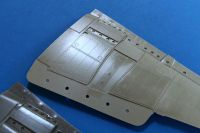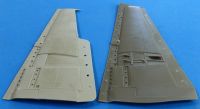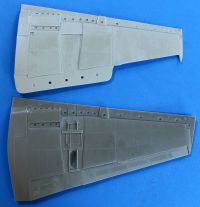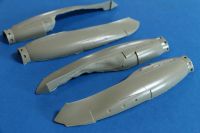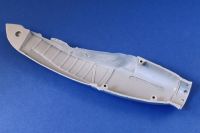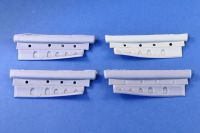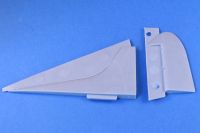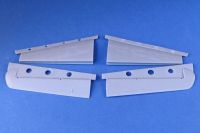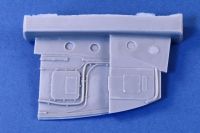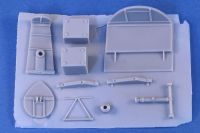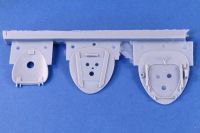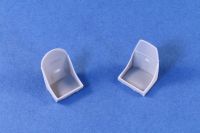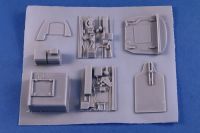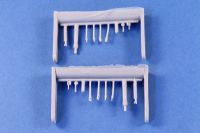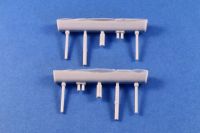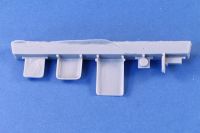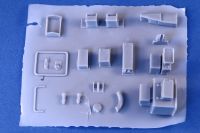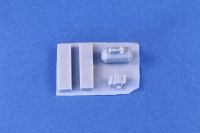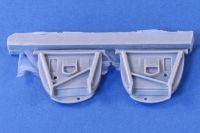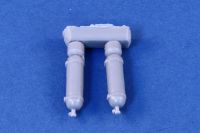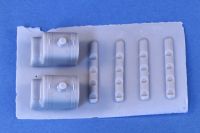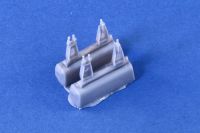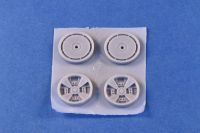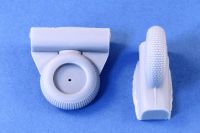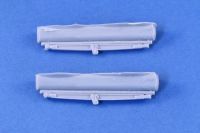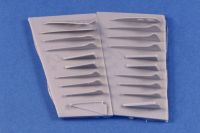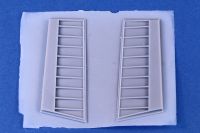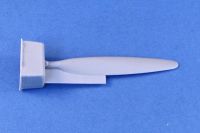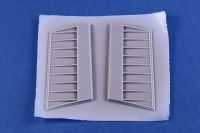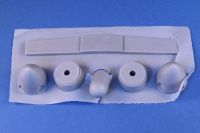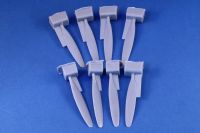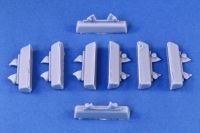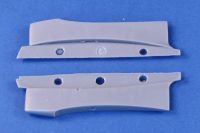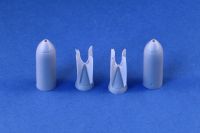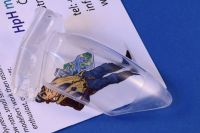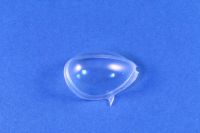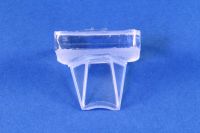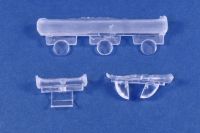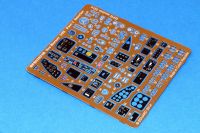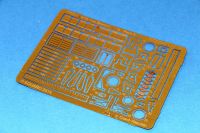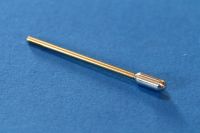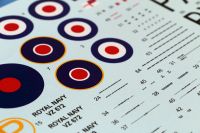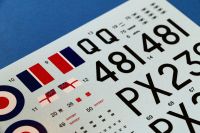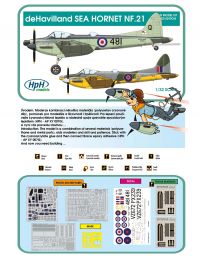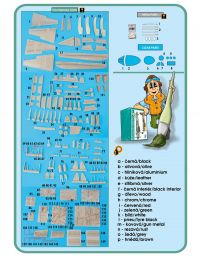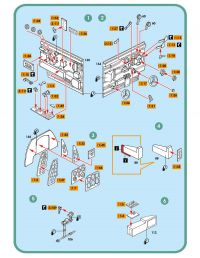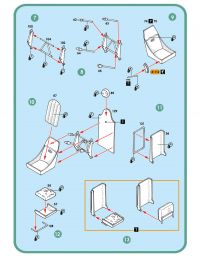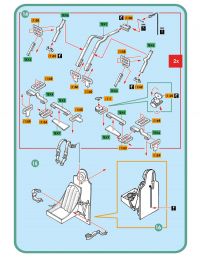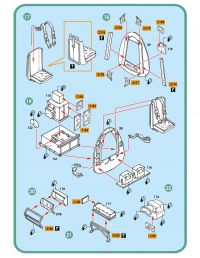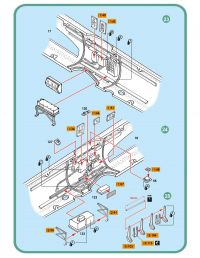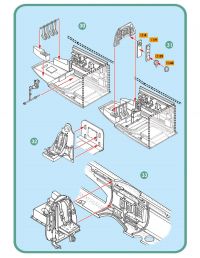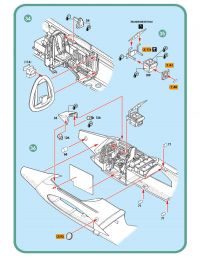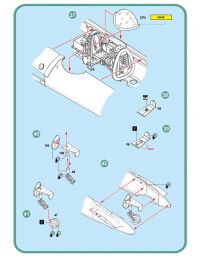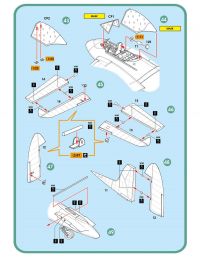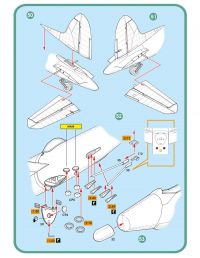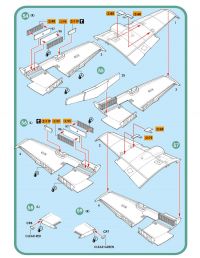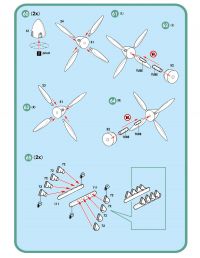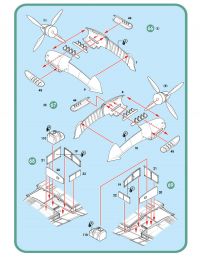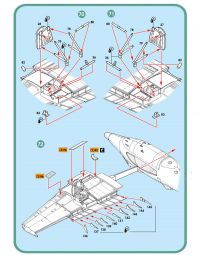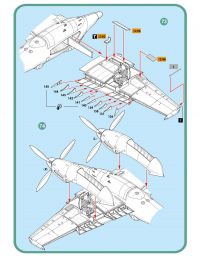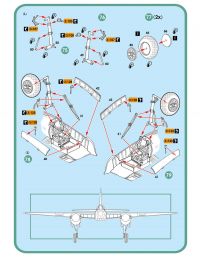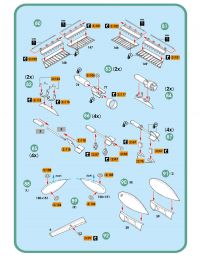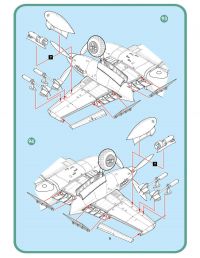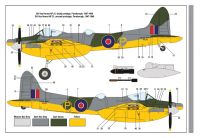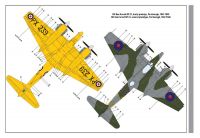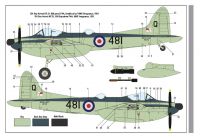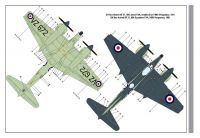HpH Models | HPH 32034R 1:32 Sea Hornet NF.21
Reviewed by Iain Ogilvie
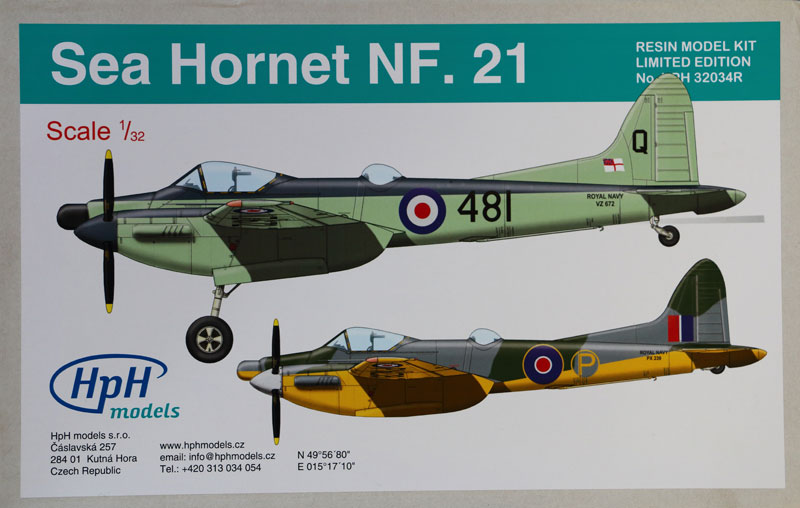
Well, here we are yet again; another aircraft type that I thought we'd never see in 1:32 - and one that makes this lost modelling soul very happy indeed!
This is the second Hornet from HpH, the earlier kit representing the single-seat RAF variant and I'll be reviewing that one here in the near future. This revised tooling to represent the two-seat, night-fighter, version of this beautiful aeroplane operated by the Royal Navy.
Sea Hornet NF Mk 21
The Hornet NF 21 was designed to fill a Fleet Air Arm night fighter. Flame-dampening exhausts were installed and a second crew station was added to the rear fuselage, just above the wing trailing edges. ASH radar equipment was located in the rear of this with the radar operator/navigator seated facing aft. A small entry hatch was provided in the lower fuselage and a fixed, teardrop-shaped jettisonable bubble canopy provided a good field of view. At the front of the aircraft, the nose underwent a transformation with the small rotating ASH radar dish being housed under an elongated "thimble" radome. An arrester hook was fitted to facilitate carrier landings.
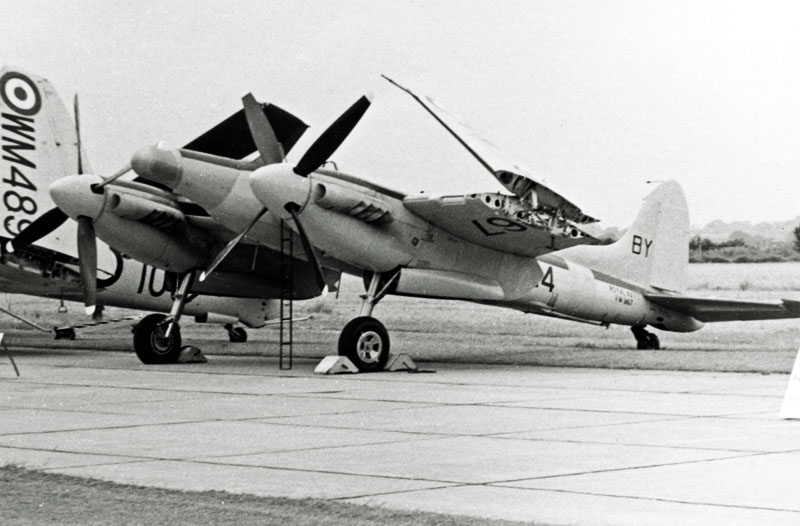
Captain Eric "Winkle" Brown, former fighter pilot and officer of the Fleet Air Arm, one of the world's most accomplished test pilots and holder of the record for flying the greatest number of different aircraft types, was a big fan of the Sea Hornet. Just after VE Day the first semi-navalised Sea Hornet PX 212 arrived at the RAE, Farnborough. Eric Brown initiated work-up to deck-landing trials. 37 years later, he was still impressed:
"...the next two months of handling and deck landing assessment trials were to be an absolute joy; from the outset the Sea Hornet was a winner!"
"The view from the cockpit, positioned right forward in the nose beneath a one-piece aft-sliding canopy was truly magnificent. The Sea Hornet was easy to taxi, with powerful brakes... the takeoff using 25 lb (2,053 mm Hg, 51" Hg) boost and flaps at one-third extension was remarkable! The 2,070 hp (1,540 kW) Merlin 130/131 engines fitted to the prototypes were to be de-rated to 18 lb (1,691 Hg, 37" Hg) boost and 2,030 hp (1,510 kW) as Merlin 133/134s in production Sea Hornets, but takeoff performance was to remain fantastic. Climb with 18 lb boost exceeded 4,000 ft/min (1,200 m/min)"...
"In level flight the Sea Hornet's stability about all axes was just satisfactory, characteristic, of course, of a good day interceptor fighter. Its stalling characteristics were innocuous, with a fair amount of elevator buffeting and aileron twitching preceding the actual stall"...
"For aerobatics the Sea Hornet was absolute bliss. The excess of power was such that manoeuvres in the vertical plane can only be described as rocket-like. Even with one propeller feathered the Hornet could loop with the best single-engine fighter, and its aerodynamic cleanliness was such that I delighted in its demonstration by diving with both engines at full bore and feathering both propellers before pulling up into a loop!"
"Landings aboard Ocean had been made without any crash barrier... Yet, in the case of the Sea Hornet, I had felt such absolute confidence that I was mentally relaxed... Indeed, there was something about the Sea Hornet that made me feel that I had total mastery of it; I reveled in its sleek form and the immense surge of power always to hand..."
"Circumstances had conspired against the Sea Hornet in obtaining the recognition that it justly deserved as a truly outstanding warplane...in my book the Sea Hornet ranks second to none for harmony of control, performance characteristics and, perhaps most important, in inspiring confidence in its pilot. For sheer exhilarating flying enjoyment, no aircraft has ever made a deeper impression on me than did this outstanding filly from the de Havilland stable."
Very much a pilot's aeroplane! Sadly, no complete airframes have survived.
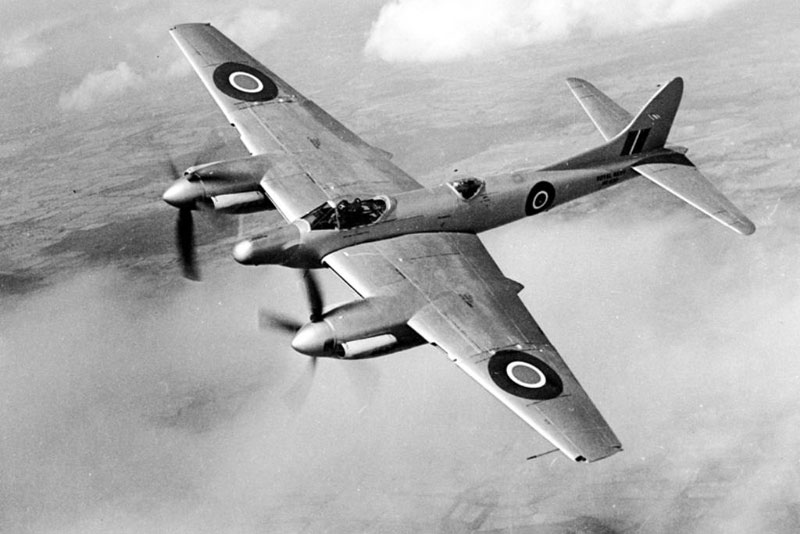
A Quality Package
The kit is supplied in usual HpH style - a stout card box with dividers creating separate compartments for the components, which are either bagged, or wrapped in bubble wrap. The kit should survive the rigours of most postal services relatively intact.
As well as the grey resin components the kit includes clear resin, photo-etch, laser cut fabric and turned metal components, a set of canopy masks plus a nicely printed decal sheet. Instructions are supplied on a CD for viewing on your computer, or can be downloaded from the HpH website.
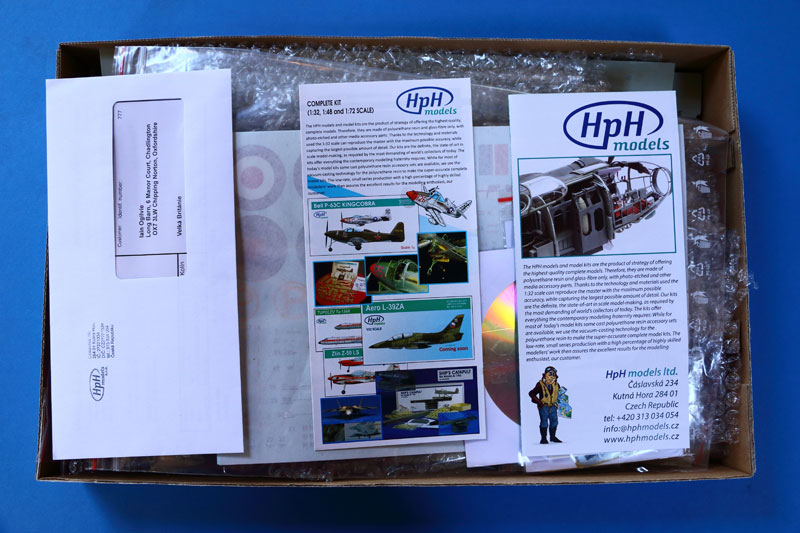
On opening the box you just know you're in for a treat!
Not forgetting the Belgian Chocolate - a useful item with which to persuade your better half that you've made a wise investment! ;o)
Fuselage
The fuselage halves are cleanly cast in two halves, complete with the nose radar faring. Thin 'pour stubs' are attached to the upper sides of the two components and, whilst they look substantial, should only take a few minutes to remove with a sharp knife and some sanding sticks/wet and dry.
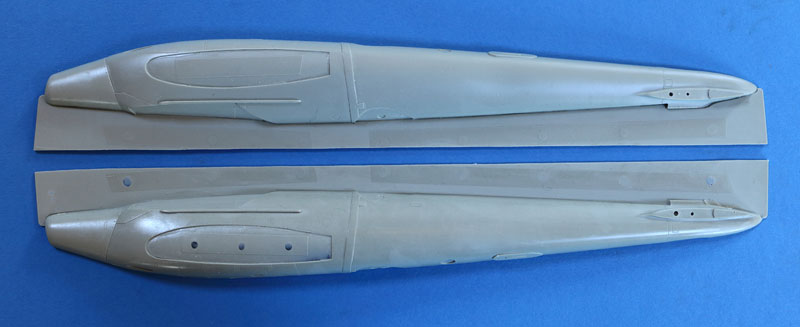
Surface detail is neatly engraved and, bearing in mind the original fuselage was of wooden construction, looks representative of the full-size airframe. As well as the nose the components feature areas specific to the NF Mk 21; second crew station, underside entry hatch and strengthened areas for the tail hook.
The observers station features beautifully detailed internal detail moulded into the side walls.
Some quick comparison shots with the earlier RAF release from HpH highlight some of the differences. As well as the obvious changes HpH have also changed the way the wing mounts to the fuselage on this kit - presumably to make it simpler?
And a quick comparison with a superb set of as yet incomplete drawings supplied by respected draughtsman Arthur Bentley - here in 1:24. My thanks to Arthur!
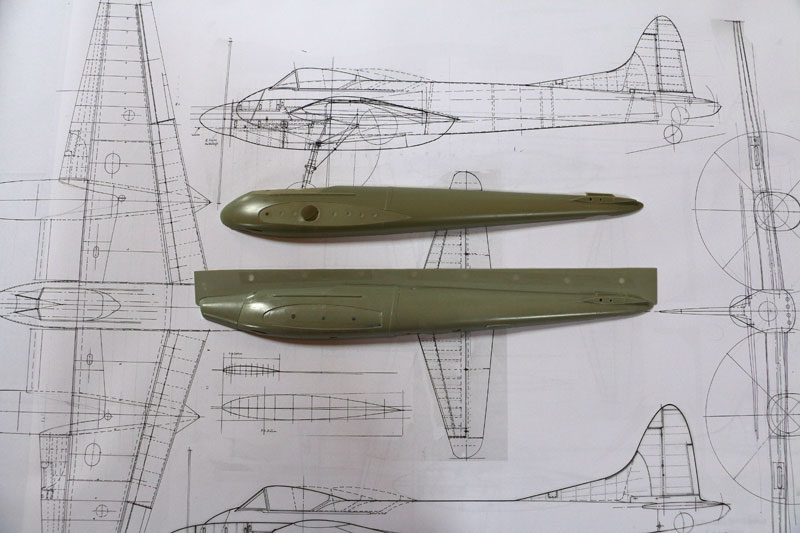
The nose area below and in front of the windshield is, like it's single-seat brother, still a little out shape-wise - but nothing that cannot be fairly easily fixed by those happy to assemble a resin kit. For more info take a look at Peter Castle's build of the single seater.
Wings
Again, these components are cleanly cast in grey resin and correctly portray the wing fold of the Sea Hornet (no wing fold option is provided) and relevant surface detailing. The upper surfaces of Hornet wings were made of wood, the underside skins were aluminium. As well as the changes at the wing roots compared to the earlier single-seater kit, the Sea Hornet now has corrected undercarriage bays. On the single-seat kit the bay roof is, in effect, a continuation of the wing underside when, in reality, the area went up into the area behind the main spar. This is now correctly portrayed in the Sea Hornet kit.
I'm not convinced by the upper surface areas on the inner wing between the nacelles and fuselage. The spar is raised in this area compared to the line from wing tip to nacelle on the real airframe - with a resulting raised surface in front view from nacelle to fuselage. Still figuring that one out - but if I make any mods to the build they should be relatively straightforward to do.
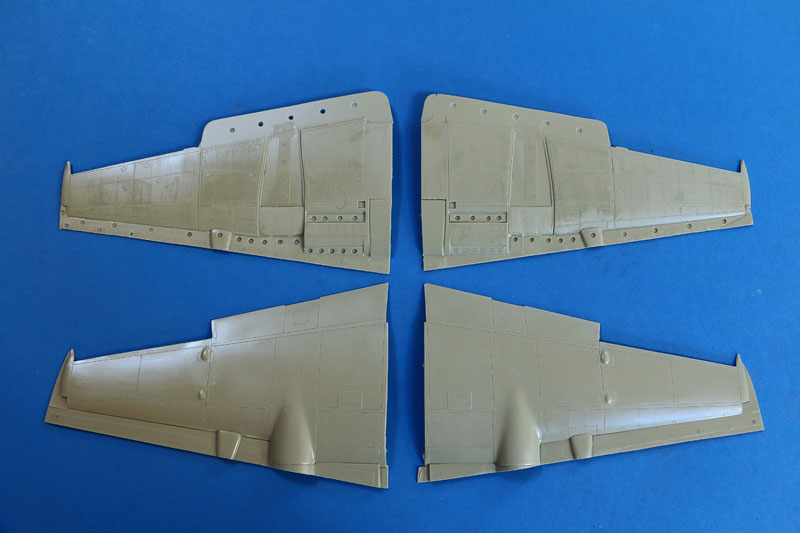
Areas to be removed when prepping the wings are clear to see and should be a simple job to remove.
A quick comparison with the single-seat wings highlights the differences:
Nacelles/Cowlings
Again - nicely moulded components with clean surface details. If I were to really nit pick I'd point out that the starboard cowl should be a very small amount longer as that engine on the real aeroplane was slightly longer to accommodate the gears to rotate the prop in the opposite direction to that on the port side. We are, however, taking about a really small amount; on the actual aeroplane this difference was 0.759"/19.3mm - so only 0.023"/0.6mm in 1:32 and, I suspect, most will ignore this detail, or simply add a disc of polystyrene sheet of suitable thickness. Jury is still out - but I may also change the profile of the upper cowl panels to reflect a very subtle lengthwise bulge, or 'eyebrow', that sits over the cylinder heads on each side.
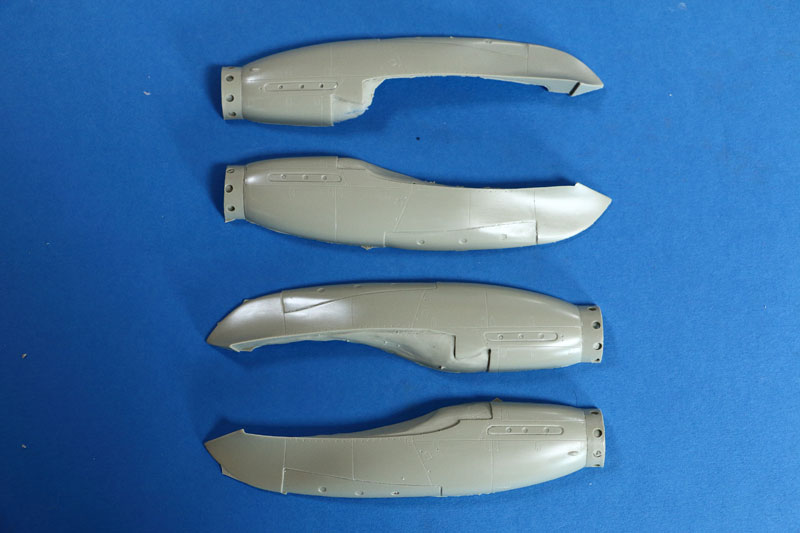
Interior structure is neatly represented on the nacelles as well as the main undercarriage doors.
Empennage
Not a huge amount to report here - the shapes and dimensions look good and separate elevators and rudders are provided.
Interior
As with all HpH kits interior details for the cockpit and observers station abound - again all cleanly cast in grey resin.
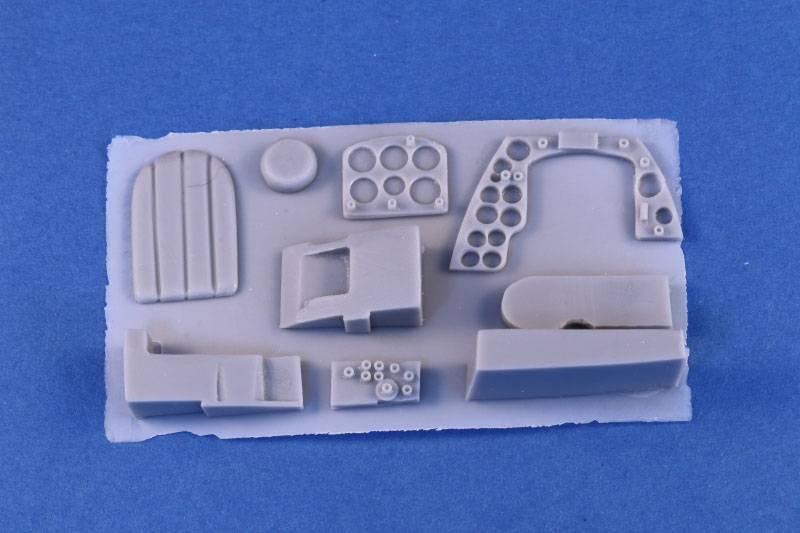
Undercarriage
As noted above the gear bay openings have been improved over that of the single-seater, but the majority of the undercarriage structural components remain the same.
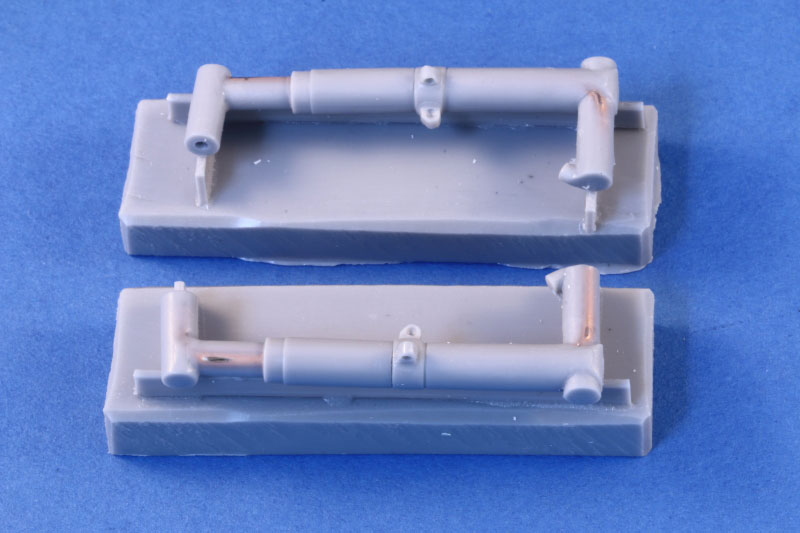
Radiators, Props and Flaps
All comprehensively provided. Detail is very nice and shapes look good. Only fly in my particular ointment is I have 5 prop blades for one side and three for the other - remember the props are handed!
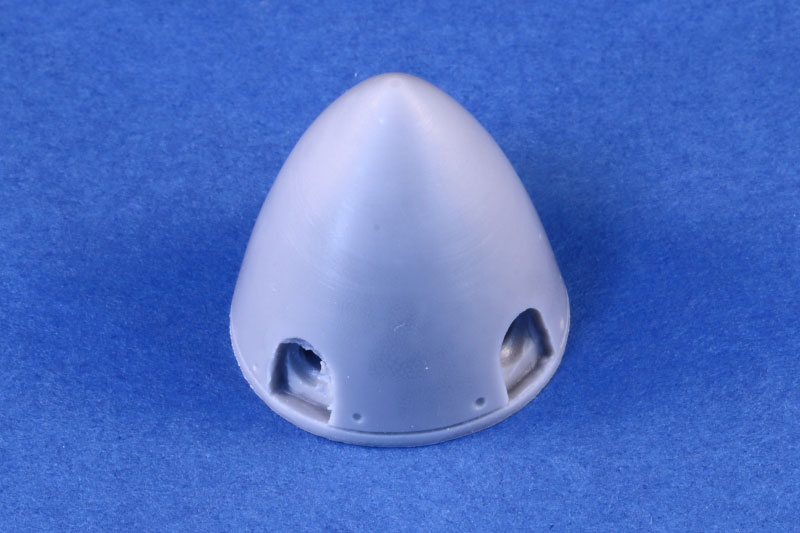
Exhausts
These are made up from individual exhaust stacks (two halves each) and separate flame damper shrouds.
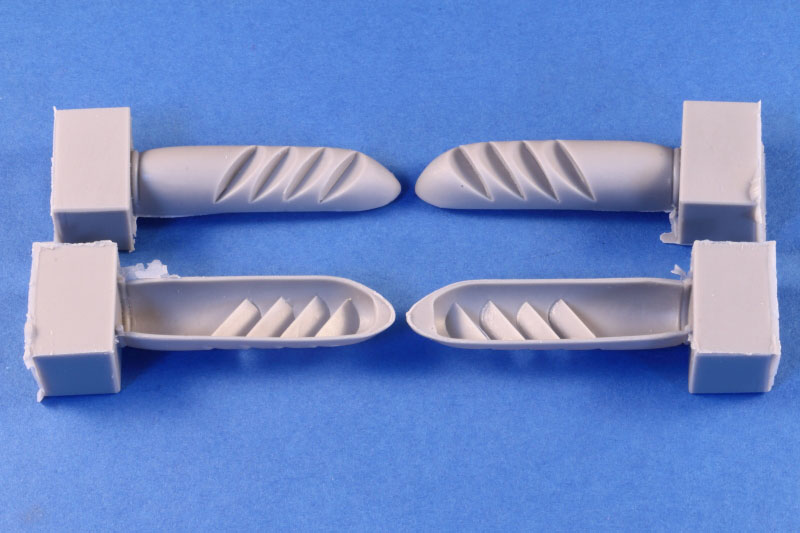
Stores
In addition to the 25lb rockets covered further down this review, the kit provides a nice pair of 500lb bombs, 100 Gallon drop tanks and associated pylons that are unique to the Sea Hornet.
Clear Components
All transparencies are supplied in clear resin - with very good clarity.
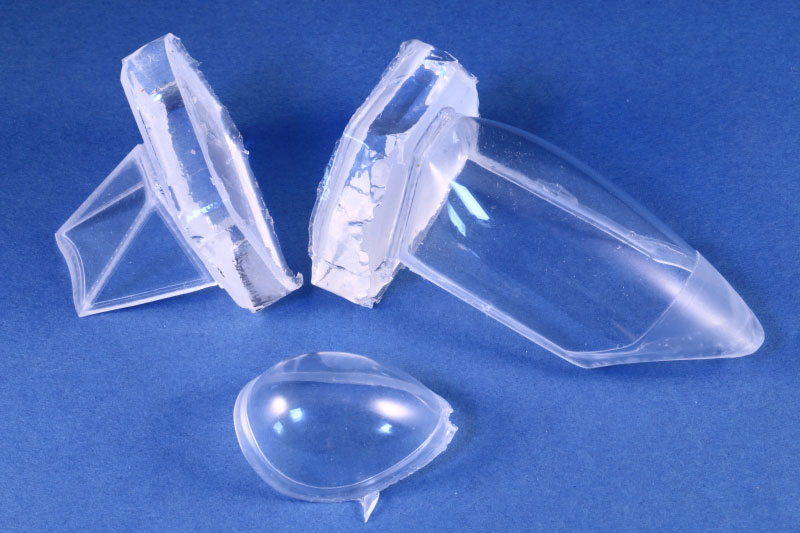
Photo-Etch
Two frets - one plain and one pre-coloured - are provided. Manufactured by Eduard their quality is very good as you'd expect.
Seat Straps
Did I mention that HpH kits were very complete packages yet? The kit includes a very nice looking set of fibre straps by HGW Models as shown below.
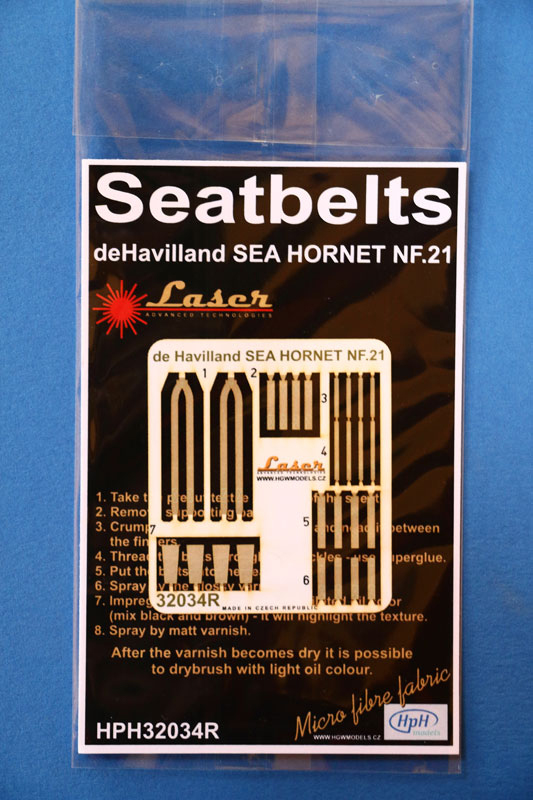
Metal Parts
These are provided for the pitot tube, prop/spinner mounts and some really nice 25lb rockets.
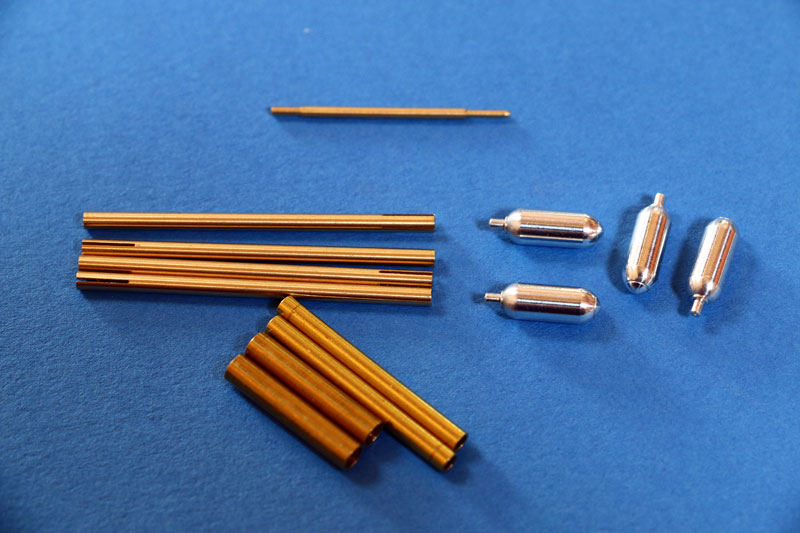
Decals
The large decal sheet is cleanly printed, in good register, colour and density. A full set of airframe stencils is included.
Markings for two aircraft are provided:
- Second Prototype NF Mk 21 PX239, RAE Farnborough 1947/48 in Dark Sea Grey, Dark Green and Yellow
- NF Mk 21 VZ672 of 809 Squadron FAA embarked on HMS Vengeance in 1951
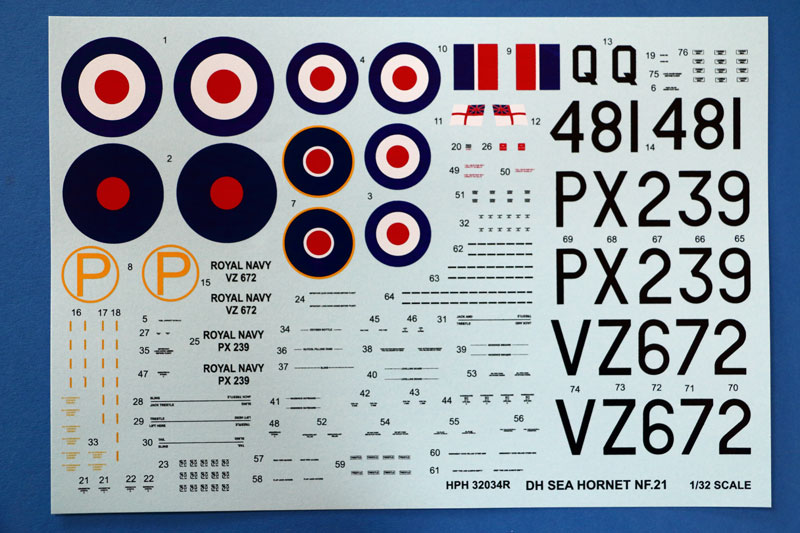
Masks
A neatly cut set of vinyl masks are provided.
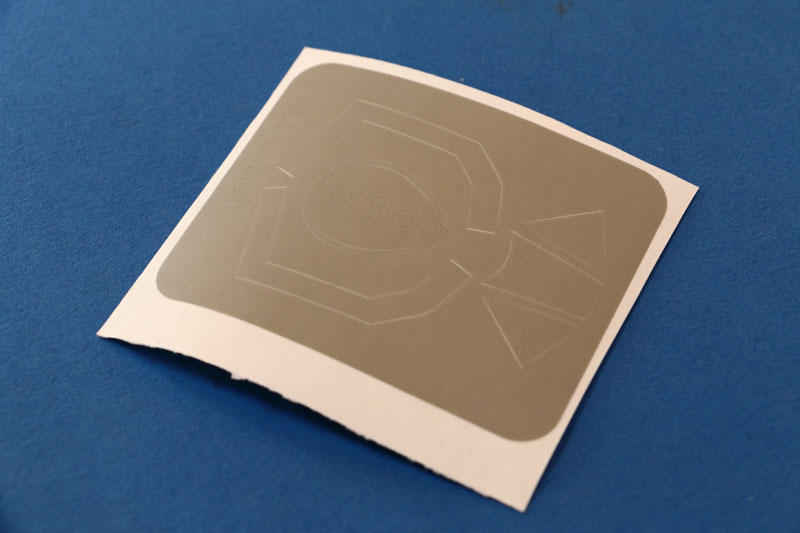
Instructions
Provided on the CD, or via the HpH website, these instructions are superb for a resin kit and would put most mainstream injected kit companies to shame in terms of clarity. Of course the proof of the pudding is in the build, we'll see!
Markings Guides
Clear and concise full colour illustrations of the two schemes, including stencil placement.
Conclusion
What can I say - yes, I'm a little biased because of the subject - but this is another very complete package from the team at HpH. Moulding quality is up there with the best in resin kits and with the addition of belts, pre-coloured photo etch, turned brass rockets and the overall detail included you'd be really hard pressed to need any additions to this kit and, on that basis I have to say that these kits, albeit expensive, do represent value for money, especially given the subject. I often hear folks decrying the high cost of resin kits, but if they understood the work that goes into the creation and moulding of this type of kit and the time it takes to cast by hand I think they'd be surprised. And you're not exactly going to see many of these built - so you really do get something different for your hard-earned cash.
Whilst a few areas, notably the undercarriage bays, have been improved over the original RAF release there are still a number of areas that can be improved and I'll be covering those in coming months on the forums.
In my opinion the most accurate Sea Hornet kit to date and I doubt we'll ever see another in 1:32!
Highly recommended if you can afford it!
Availability
This kit is available direct from HpH in the Czech Republic.
Recommended Reading
One of the best references of recent times is the Valiant Wings publication "The de Havilland Hornet and Sea Hornet" reviewed earlier by Kevin Futter.
My thanks to HpH Models and Large Scale Planes for the opportunity to review this kit.
Iain
© Iain Ogilvie 2016
This review was published on Friday, May 13 2016; Last modified on Saturday, June 18 2016

